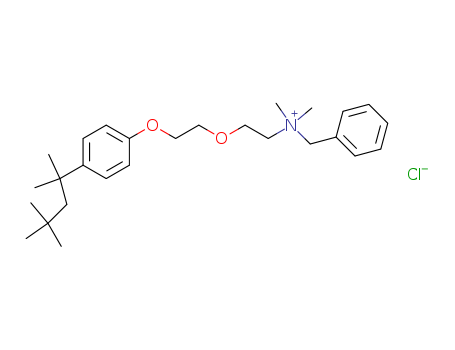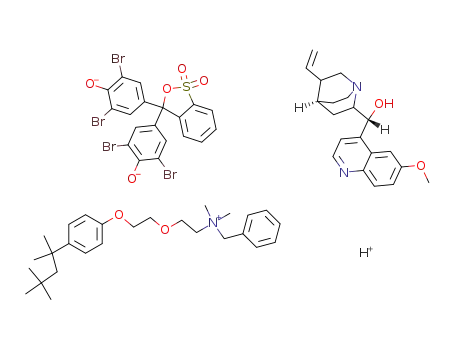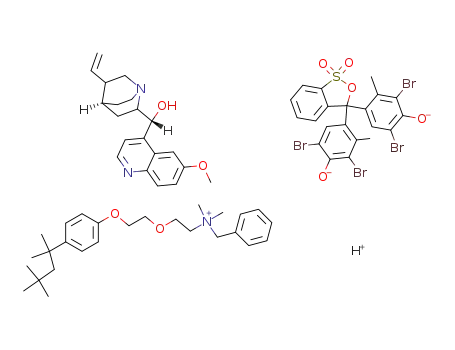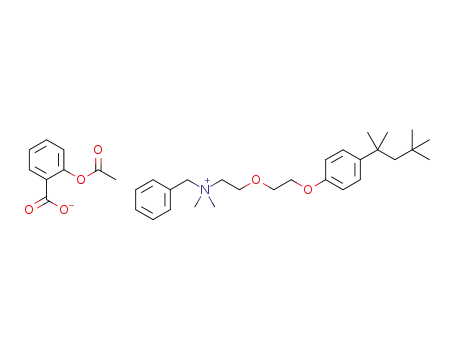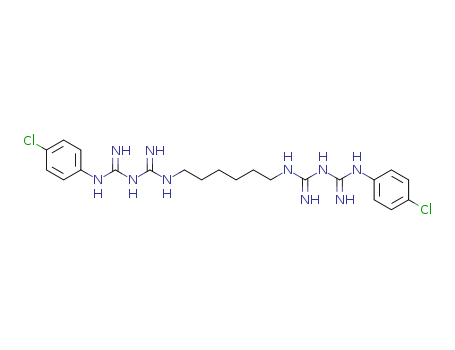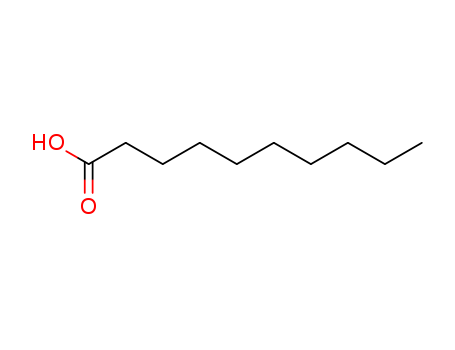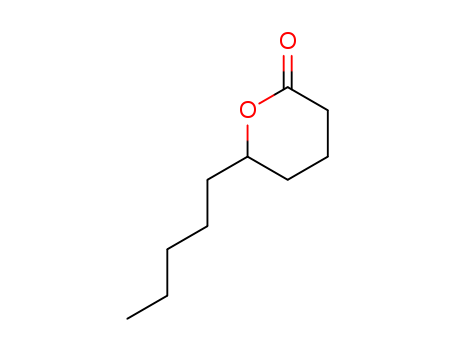|
Chemical Properties
|
White or yellowish-white powder. |
|
Originator
|
Phemerol,Parke Davis,US,1942 |
|
Uses
|
benzethonium chloride is a preservative that works against algae, bacteria, and fungi. In skin care preparations, it is safe for use at concentrations of 0.5 percent. |
|
Definition
|
ChEBI: A (synthetic) quaternary ammonium salt that is benzyldimethylamine in which the nitrogen is quaternised by a 2-{2-[p-(2,4,4-trimethylpentan-2-yl)phenoxy]ethoxy}ethyl group, with chloride as the counter-ion. An antiseptic and disinfectant, it i
active against a broad spectrum of bacteria, fungi, moulds and viruses. |
|
Production Methods
|
p-Diisobutylphenol is condensed in the presence of a basic catalyst
with β,β'-dichlorodiethyl ether to yield 2-[2-[4-(1,1,3,3-tetramethylbutyl)
phenoxy]ethoxy]ethyl chloride. Alkaline dimethylamination
then produces the corresponding tertiary amine which, after
purification by distillation, is dissolved in a suitable organic solvent
and treated with benzyl chloride to precipitate benzethonium
chloride. |
|
Manufacturing Process
|
A mixture of 32 g of p-(α,α,γ,γ-tetramethylbutyl)phenoxyethoxyethyl�dimethylamine and 12.7 parts of benzyl chloride was warmed in 50 g of
benzene for 2 hours. The benzene was then evaporated. The residual viscous
mass gave a foamy, soapy solution in water.
The original starting materials are p-diisobutylphenol, dichlorodiethyl ether
and dimethylamine. |
|
Brand name
|
Microklenz
(Carrington); Phemerol Chloride (Parke-Davis). |
|
Therapeutic Function
|
Topical antiinfective |
|
General Description
|
Odorless white crystals or powder with a very bitter taste. A 1% solution in water is slightly alkaline to litmus. |
|
Air & Water Reactions
|
Hygroscopic. May be sensitive to prolonged exposure to air. Water soluble. |
|
Reactivity Profile
|
Benzethonium chloride is incompatible with strong oxidizing agents Incompatible with soap and anionic detergents. Can react with nitrates. Sensitive to light. Acids cause Benzethonium chloride to precipitate from aqueous solutions of >2% concentration. Stable for two weeks at temperatures up to 140 F, . |
|
Hazard
|
An oral poison. |
|
Fire Hazard
|
Flash point data for Benzethonium chloride are not available. Benzethonium chloride is probably combustible. |
|
Flammability and Explosibility
|
Notclassified |
|
Pharmaceutical Applications
|
Benzethonium chloride is a quaternary ammonium compound used
in pharmaceutical formulations as an antimicrobial preservative.
Typically, it is used for this purpose in injections, ophthalmic and
otic preparations at concentrations 0.01–0.02% w/v. Benzethonium
chloride may also be used as a wetting and solubilizing agent, and as
a topical disinfectant.
In cosmetics such as deodorants, benzethonium chloride may be
used as an antimicrobial preservative in concentrations up to 0.5%
w/v.
The physical properties and applications of benzethonium
chloride are similar to those of other cationic surfactants such as
cetrimide. |
|
Safety Profile
|
Poison by ingestion,subcutaneous, intraperitoneal, and intravenous routes. Asevere eye irritant. Questionable carcinogen withexperimental neoplastigenic data. Mutation data reported.When heated to decomposition it emits very toxic fumesof Cl - |
|
Safety
|
Benzethonium chloride is readily absorbed and is generally
regarded as a toxic substance when administered orally. Ingestion
may cause vomiting, collapse, convulsions, and coma. The probable
lethal human oral dose is estimated to be 50–500 mg/kg bodyweight.
The topical use of solutions containing greater than 5% w/v
benzethonium chloride can cause irritation although benzethonium
chloride is not regarded as a sensitizer. The use of 0.5% w/v
benzethonium chloride in cosmetics is associated with few adverse
effects. A maximum concentration of 0.02% w/v benzethonium
chloride is recommended for use in cosmetics used in the eye area
and this is also the maximum concentration generally used in
pharmaceutical formulations such as injections and ophthalmic
preparations.
See also Benzalkonium Chloride.
LD50 (mouse, IP): 15.5 mg/kg
LD50 (mouse, IV): 30 mg/kg
LD50 (mouse, oral): 338 mg/kg
LD50 (rat, IP): 16.5 mg/kg
LD50 (rat, IV): 19 mg/kg
LD50 (rat, oral): 368 mg/kg
LD50 (rat, SC): 119 mg/kg |
|
storage
|
Benzethonium chloride is stable. Aqueous solutions may be
sterilized by autoclaving.
The bulk material should be stored in an airtight container
protected from light, in a cool, dry place. |
|
Purification Methods
|
Crystallise it from boiling acetone after filtering or from CHCl3/pet ether. The precipitate is filtered off, washed with diethyl ether and dried for 24hours in a vacuum desiccator. It is a cationic antiseptic surfactant which forms crystals also from a 1:9 MeOH/Et2O mixture. It foams in water. [Beilstein 12 IV 2187.] |
|
Incompatibilities
|
Benzethonium chloride is incompatible with soaps and other
anionic surfactants and may be precipitated from solutions greater
than 2% w/v concentration by the addition of mineral acids and
some salt solutions. |
|
Regulatory Status
|
Included in the FDA Inactive Ingredients Database (IM and IV
injections; nasal, ophthalmic and otic preparations). Included in the
Canadian List of Acceptable Non-medicinal Ingredients. |

